Owning Our Future
The project from Community Land Scotland, paired five creative practitioners with five community landowners across Scotland. As the creative practitioner for Peebles, I explored the role of community-owned land and buildings during the Coronavirus pandemic, and helped the community look to a more sustainable and resilient future. A creative output was then designed for the community to continue changing the narrative.
Background
Owning Our Future was created to find out what challenges communities in Scotland have faced during Covid-19 and what their hopes are for the future. Within the six-week facilitation window between November and December 2020, I spoke to a broad range of people who live in Peebles from teens to retirees.
Owning Our Future was created to find out what challenges communities in Scotland have faced during Covid-19 and what their hopes are for the future. Within the six-week facilitation window between November and December 2020, I spoke to a broad range of people who live in Peebles from teens to retirees.
About Peebles
Peebles is an old royal burgh in the Scottish Borders with a population of over 9,000 people. The Tweed River runs through the town, creating a north and south divide. Peebles is also a commuter town with a lot of people travelling to Edinburgh and other areas for work. The town relies on tourism to boost the local economy and have a number of large sporting events throughout the year.
Peebles is an old royal burgh in the Scottish Borders with a population of over 9,000 people. The Tweed River runs through the town, creating a north and south divide. Peebles is also a commuter town with a lot of people travelling to Edinburgh and other areas for work. The town relies on tourism to boost the local economy and have a number of large sporting events throughout the year.
Covid-19 has altered the working and economic patterns of Peebles. With more people working from home, they can now spend more time outdoors and shopping locally. While the pandemic has exposed social inequality or increased health and socio-economic issues, it has also shown that the Peebles community will mobilise to help those that need it.
Method
The research phase included a guided walk around the town, reading literature on the history of Peebles, and a lot of stalking of local Facebook groups. In addition, I spoke to a number of people involved in community work such as an investigative journalist, social artist, group directors, and business owners. The insights from these interviews helped in the creation of a set of prompt cards for the next phase of the project – imagining the future of Peebles.
The research phase included a guided walk around the town, reading literature on the history of Peebles, and a lot of stalking of local Facebook groups. In addition, I spoke to a number of people involved in community work such as an investigative journalist, social artist, group directors, and business owners. The insights from these interviews helped in the creation of a set of prompt cards for the next phase of the project – imagining the future of Peebles.
Running a small workshop with young people at the local youth centre
A speculative design approach was used to help people imagine how their current and potentially future community-owned land and buildings could strengthen the town post-pandemic. To enable people to look at their surroundings in a new way I designed the following cards. Each card has a story – showing what's possible from existing community-owned assets, or alternative ways to access essentials.
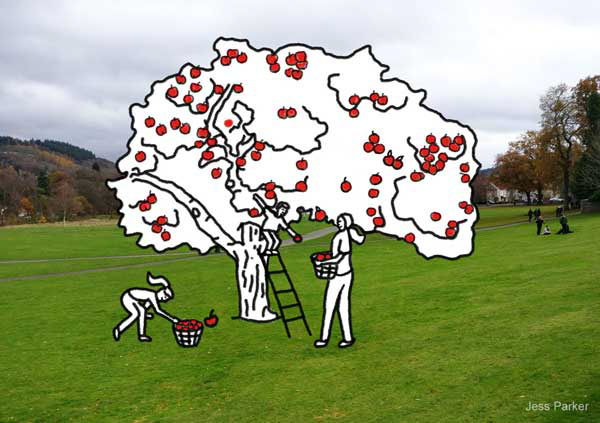
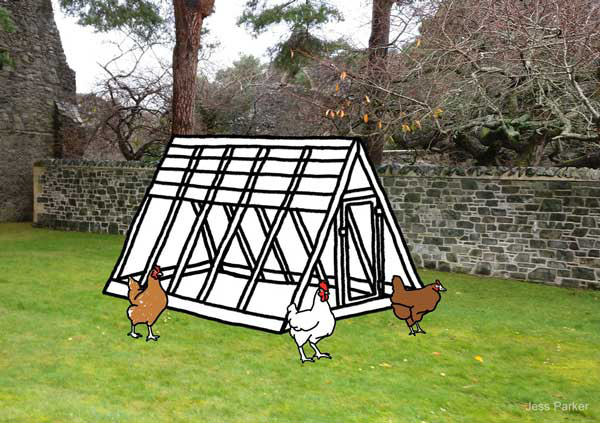
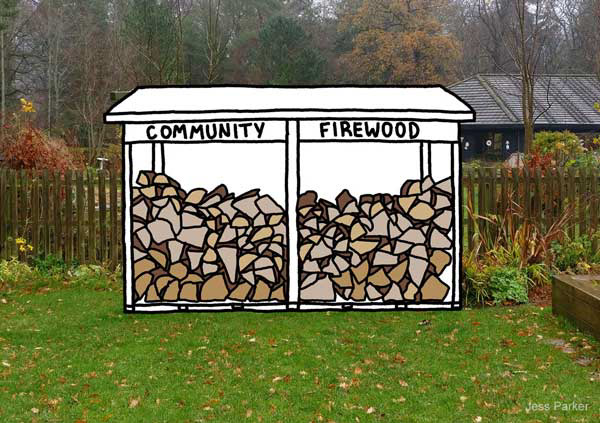

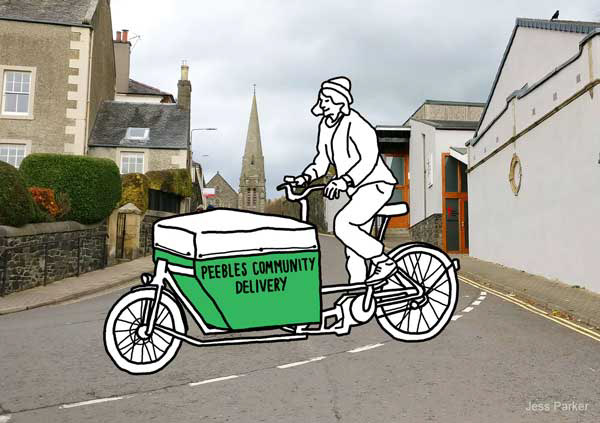
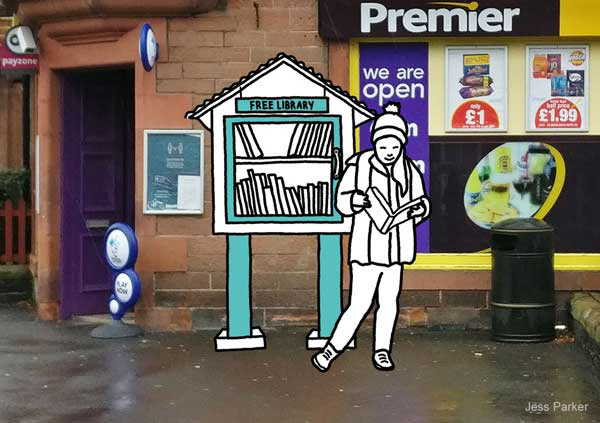
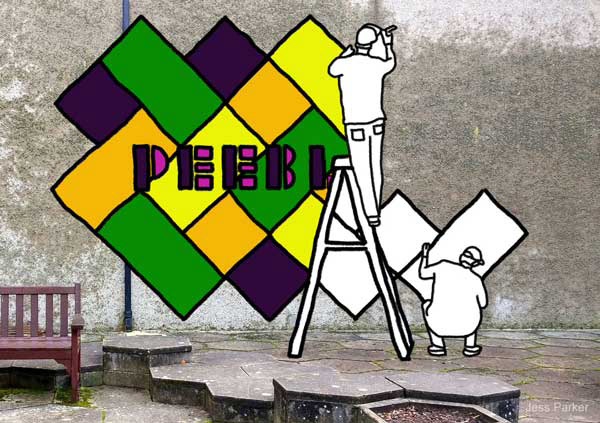
Superimposing illustrations onto photographs of locations in Peebles brought a playful and approachable element to the cards. It prevented people from being overly critical of the idea, making it easier to imagine. People also enjoyed guessing where each photo was taken.
From workshops to activity packs
Engaging people to participate in the imagining activity had its challenges. Due to Covid restrictions, access to young people was limited and group interactions weren't possible. An online workshop over Zoom was initially proposed for the first half of the creative engagement to have meaningful discussions around peoples experiences during the pandemic and what they witnessed in their community. However, after a fortnight of promoting the workshops, only a few people came forward so the workshops changed to activity packs. Around 20 packs were personally handed out to folk. They contained a leaflet introducing the project, instructions for the imagining exercise, the set of cards (some blank cards for drawing on), and a questionnaire. The pack allowed participants to complete the activity in their own time (which was limited due to Christmas approaching, busier shcedules, and schools soon closing for holidays). After completing the activity, participants were asked to email across their creative responses.
Engaging people to participate in the imagining activity had its challenges. Due to Covid restrictions, access to young people was limited and group interactions weren't possible. An online workshop over Zoom was initially proposed for the first half of the creative engagement to have meaningful discussions around peoples experiences during the pandemic and what they witnessed in their community. However, after a fortnight of promoting the workshops, only a few people came forward so the workshops changed to activity packs. Around 20 packs were personally handed out to folk. They contained a leaflet introducing the project, instructions for the imagining exercise, the set of cards (some blank cards for drawing on), and a questionnaire. The pack allowed participants to complete the activity in their own time (which was limited due to Christmas approaching, busier shcedules, and schools soon closing for holidays). After completing the activity, participants were asked to email across their creative responses.
Assembling the activity packs
Creative responses
A wide range of ideas emerged from the imagining activity for how current land and buildings (community-owned or otherwise) could better serve and strengthen the community in the future. The responses showed a need for more spaces indoors and outdoors to socialise, more colour to brighten streets and buildings, easier access to reading materials, and an increase in biodiversity. While some come with their own challenges, through the involvement and cooperation of community organisations, the council, businesses and residents, it is possible that any of these ideas could be realised. Further engagement with people in the town will be needed to show the value of community ownership.
A wide range of ideas emerged from the imagining activity for how current land and buildings (community-owned or otherwise) could better serve and strengthen the community in the future. The responses showed a need for more spaces indoors and outdoors to socialise, more colour to brighten streets and buildings, easier access to reading materials, and an increase in biodiversity. While some come with their own challenges, through the involvement and cooperation of community organisations, the council, businesses and residents, it is possible that any of these ideas could be realised. Further engagement with people in the town will be needed to show the value of community ownership.

One of the hand drawn ideas

Imagining a Peebles community bank in place of the RBS

A board games cafe for a youth-friendlier high street
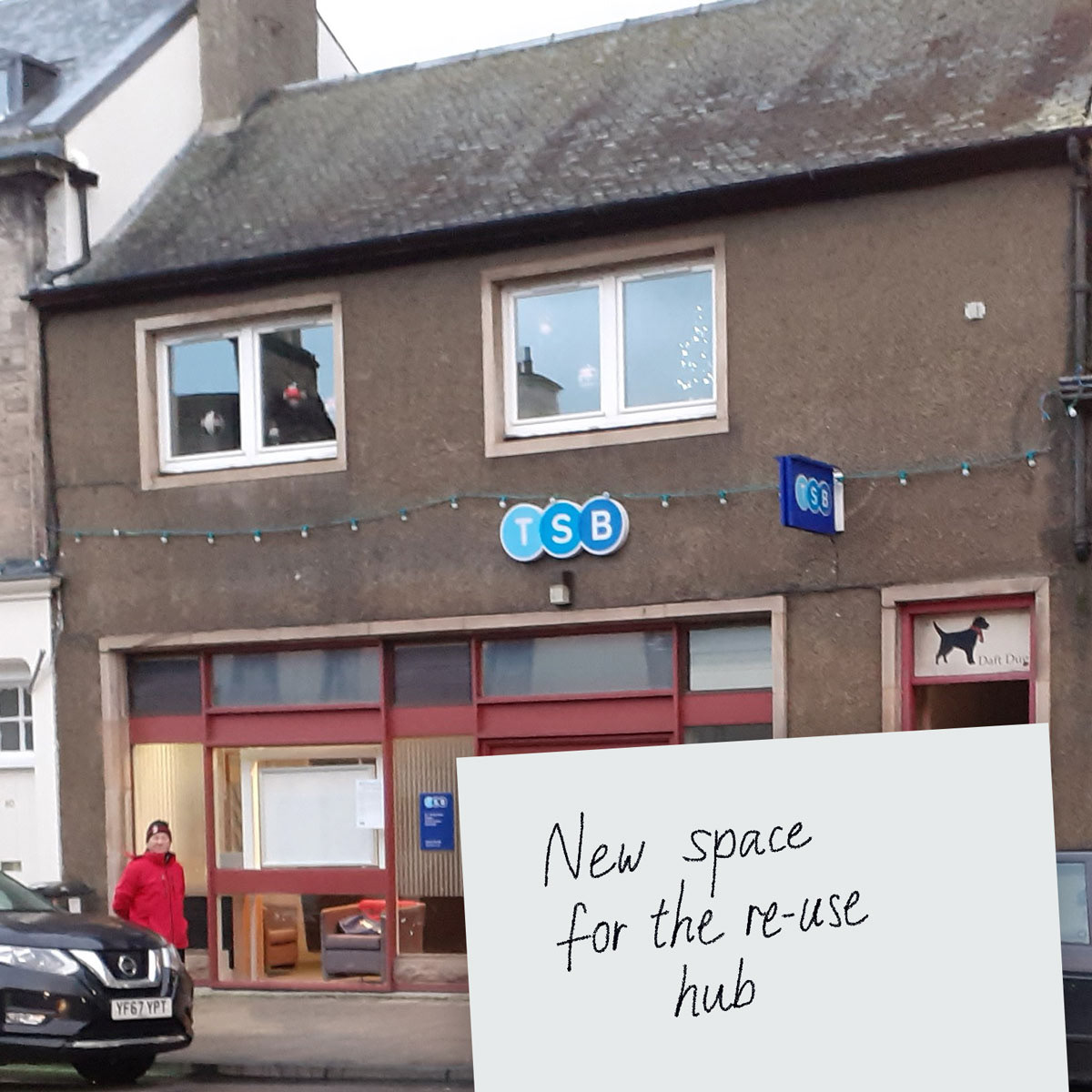
An idea for the community to take over the lease of the closing bank on a peppercorn rent

Sheltered seating for young people
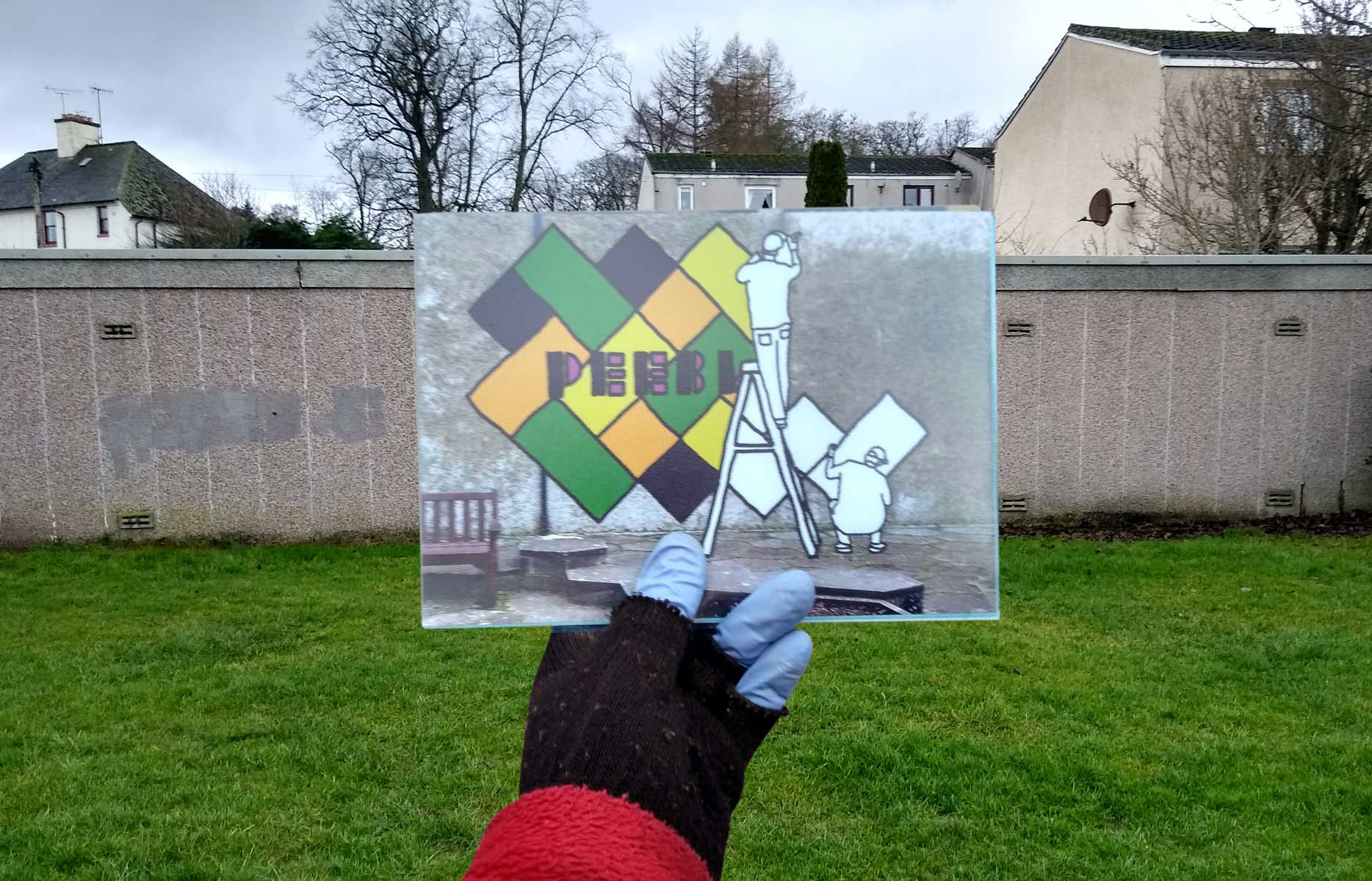
Brightening up areas with murals
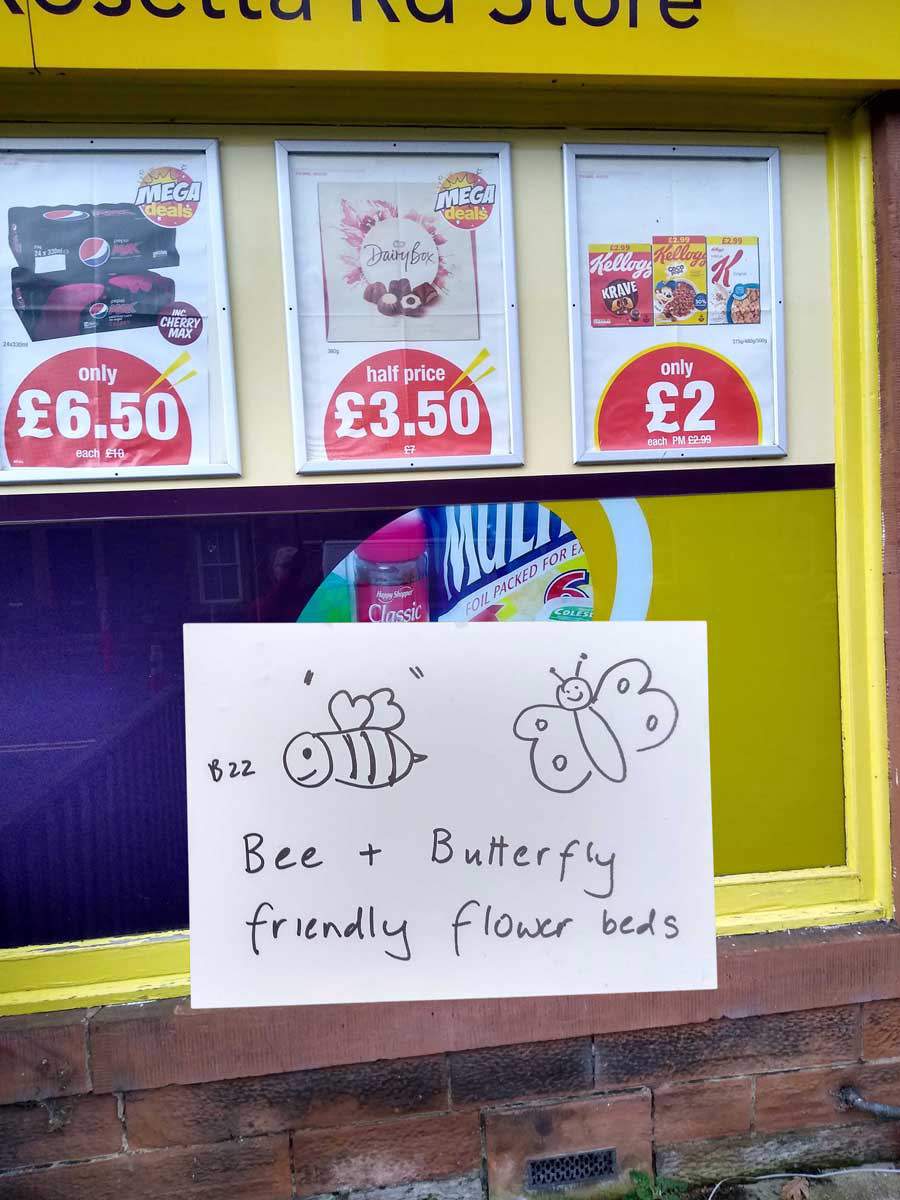
Insect friendly flowers beds in front of corner store

A productive forest garden on the Tweed Green
Creative output
After collating all the responses and sharing the findings with members of the community trust, a final output was decided on that would continue to help shift peoples perceptions for a Peebles future that is more equitable and sustainable. An illustrated map was designed featuring participants creative responses, ideas from the imagining cards, and some quirky additions to keep you looking. The map will be printed for display in the Peebles Community Trust's School Brae Hub, and on a roller banner and handouts for future engagement at schools and events.
After collating all the responses and sharing the findings with members of the community trust, a final output was decided on that would continue to help shift peoples perceptions for a Peebles future that is more equitable and sustainable. An illustrated map was designed featuring participants creative responses, ideas from the imagining cards, and some quirky additions to keep you looking. The map will be printed for display in the Peebles Community Trust's School Brae Hub, and on a roller banner and handouts for future engagement at schools and events.